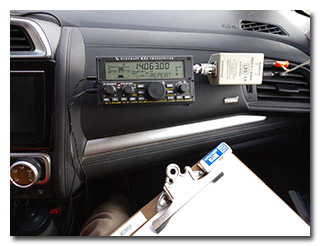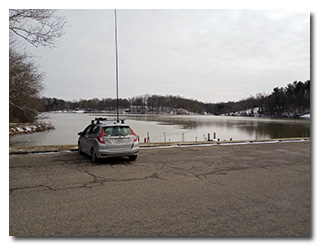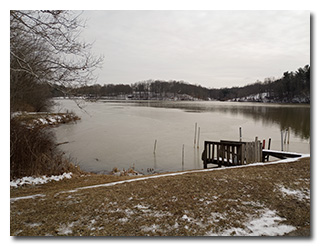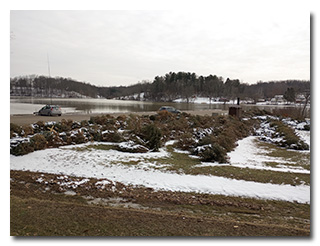
by William Eric McFadden
From the park's website:
-
Lake Logan is located in Hocking County in southeastern Ohio. This territory once belonged to the Wyandot Native Americans, who had a large village known as Oldtown on the Hocking River, located one mile north of Logan. Logan was established by Thomas Worthington in 1816 and named after the Mingo Chief, James John Logan.
The Hocking River provided sufficient water power for the operation of grist and sawmills, particularly at the falls above Logan. The town of Logan was slow to progress until the opening of the Hocking Canal, a branch of the Ohio-Erie Canal, in 1838. Several industries prospered due to the rich mineral resources of the Hocking Valley. The discovery of immense quantities of coal gave rise to a flourishing mining industry. Towns appeared and vanished as quickly as mines opened and closed.
It was soon found that iron ore could be extracted from the sandstone bedrock of the area. During the Civil War, Ohio’s iron industry reached its peak as the leading producer of iron for implements and weapons. No less than 46 furnaces were firing in Ohio’s six-county Hanging Rock Iron Region.
The clay soils of the Hocking Valley helped Ohio become a leader in clay products. The valley’s firebrick industry manufactured clay tile, building and paving bricks, and clay sewer pipe. Evidence of the industry can be seen in the many brick houses and abandoned kilns of the area. Clay is still an important commodity in the region.
Lake Logan was developed in 1955 for recreational purposes. The area was administered by the ODNR Division of Wildlife until 1964, when jurisdiction was transferred to the Division of Parks and Recreation. Originally known as Hocking Lake, the park was renamed Lake Logan to reflect the Native American heritage of the area and to avoid confusion with nearby Hocking Hills State Park and Forest.
Pictures
Description
On Wednesday, February 19, 2025, one member of the Southeast Ohio Radio Adventure Team performed a successful impromptu activation of Lake Logan State Park (US-1969) in Ohio as part of the Parks on the Air (POTA; link) program.
Eric McFadden, WD8RIF, stopped at Lake Logan State Park's fishing-peninsula on his way home after meeting his parents for lunch in Lancaster. Eric was accompanied by his wife Vickie. The pair stopped at Lake Logan State Park so that Eric could perform a quick activation of the park and to continue field-testing a 29' end-fed Zepp (EFZ) no-counterpoise antenna.
Upon arriving at the park, Eric chose to set up his station and operate at the nearly-empty fishing-peninsula overlooking the still partially-frozen Lake Logan. Deploying his under-test 29' EFZ as a vertical supported by his 31' Jackite telescoping fiberglass mast supported in a drive-on base, and mounting his Elecraft KX2 on his car's passenger-side dashboard, Eric was on the air at 2036 UTC.
As at Eric's previous activations of this park, he had good cell-signal and would be able to spot himself on POTA Spots (link) and to use POTA Spots to identify possible park-to-park (P2P) QSO opportunities.
Eric began his operation on 20m. Finding himself a clear frequency to run, Eric began calling "CQ POTA" and was auto-spotted on POTA Spots. His first QSO came at 2039 UTC with AA5HH in Texas. QSOs came very quickly, with Eric's fourteenth QSO coming at 2051 UTC with K9XE in Illinois. This quick run included QSOs with operators located in Arkansas, Florida, Illinois (3), New Jersey (2), North Carolina, Ontario, Quebec, Texas (2), Vermont, and Wisconsin.
Switching to 15m, Eric found a clear frequency, verified his KX2's internal antenna tuner could match the antenna on the band, began calling "CQ POTA", and was auto-spotted on POTA Spots. His first QSO in this run came at 2057 UTC with KJ7DT in Idaho. This was followed at 2059 UTC by a QSO with K7SPS in Idaho.
In all, Eric made sixteen QSOs in about twenty-five minutes of on-air time. All of Eric's QSOs were CW and were made with five watts output.
Eric also submitted his log to the World Wide Flora and Fauna in Amateur Radio (WWFF; link) program.
(return)



